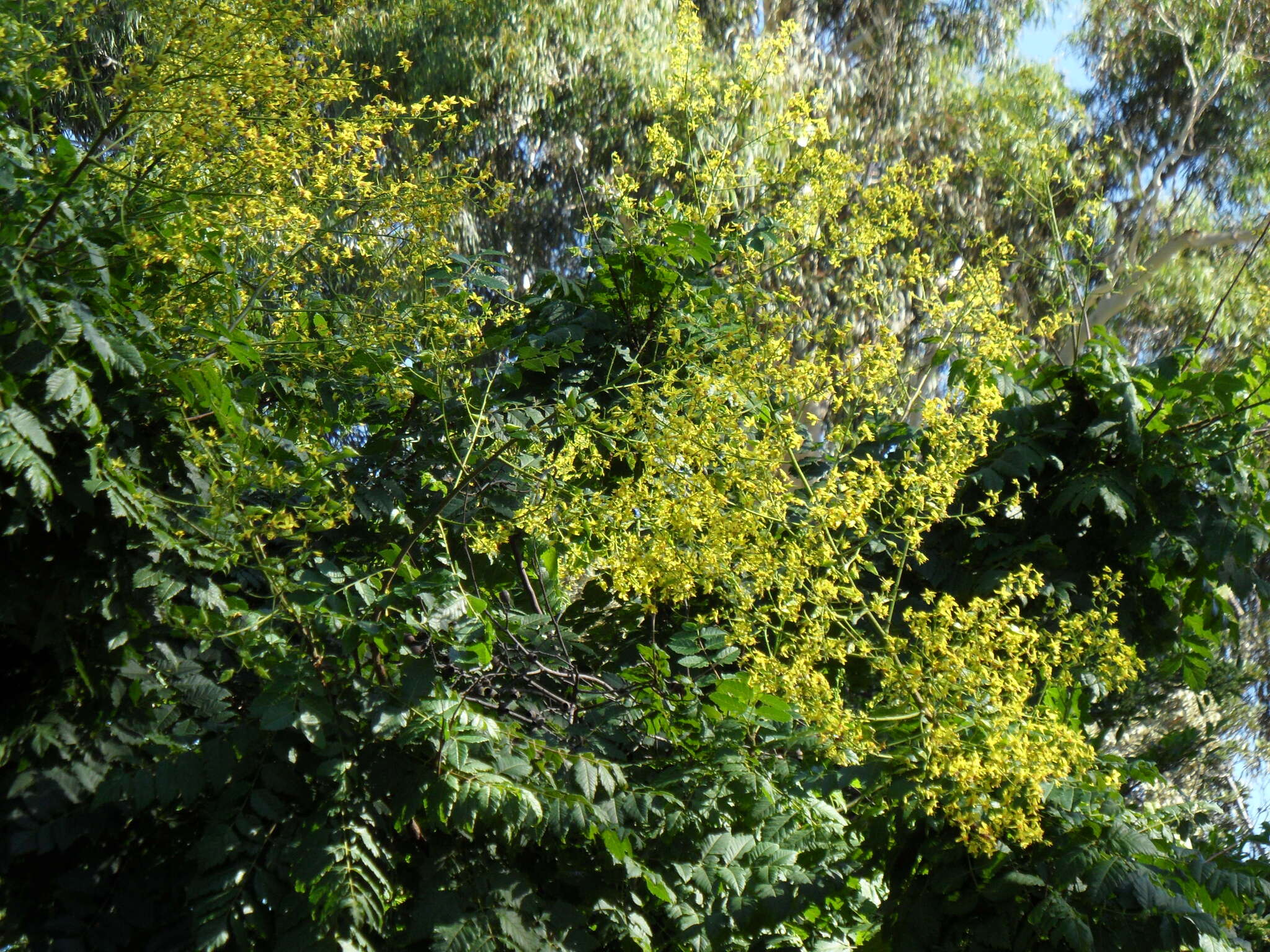
Commemorating Joseph Gottlieb Koelreuter (1733–1806), Professor of Natural History at Karlsruhe and pioneer of experimental plant hybridisation.
Deciduous trees with thick bark. New growth with many lenticels. Leaves alternate, odd-pinnate or bipinnate; stipules absent. Leaflets saw-toothed. Flower clusters to 40 cm or more long, terminal. Flowers unisexual, but males and females in the same cluster, irregular, fragrant. Calyx with 5 unequal lobes. Petals 4 (sometimes 3 in male flowers), yellow with 2 red appendages at the base. Stamens to 8, with long filaments. Ovary of 3 chambers, each containing 2 ovules. Fruit a papery balloon-like capsule with 3 valves; seeds mostly 3, roundish, black.
Grown as specimen trees in large parks and gardens, or occasionally as street trees, for the attractive foliage, fragrant flowers and ornamental fruits.
3 species, 2 from China, 1 from Taiwan to Fiji.
Seed and root cuttings.
Flowers of K. paniculata are used in China as the source of medicines and a yellow dye, and the seeds as beads and a source of oil.
Capsule large, inflated and balloon-like.
Meyer (1976).
Source: (2002). Sapindaceae. In: . Horticultural Flora of South-eastern Australia. Volume 3. Flowering plants. Dicotyledons. Part 2. The identification of garden and cultivated plants. University of New South Wales Press.
